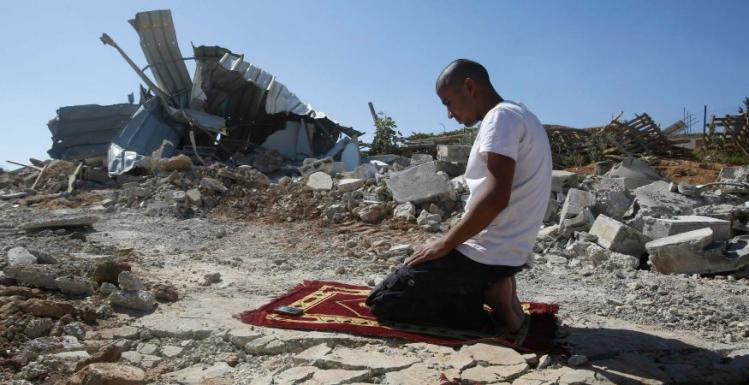
Last summer I traveled with a group of twenty-five professors and researchers to the Holy Land. We had spent the previous weeks together studying and discussing the history and politics of the region at Brandeis University’s Schusterman Center, meeting for briefings, lectures, and dinners. Now we were going to Jerusalem and Tel Aviv to see for ourselves. We would supplement what we had learned at Brandeis with the “facts on the ground.” As it turned out, we arrived during a fifty-day conflict in Gaza that left over two thousand people dead. The facts on the ground were changing every day. Wanting to get beyond canned presentations and guided tours, I decided to take my own journey. I wanted to hear from other, less academic voices, and I soon found them.
In Ramallah I met “K,” a fifty-seven-year-old Palestinian intellectual who had an MA in refugee studies from Oxford University and served in a variety of multinational concerns in the West Bank. K told me that the failure of the latest round of U.S.-led peace negotiations had to do with American naïveté. American officials thought that things could be worked out within short time frames if only all parties were willing to compromise, but attitudes that had developed over decades would not disappear instantly. K insisted that most Palestinians have accepted the fact of Israel, but fifty years of rhetoric have been drummed into their consciousness—and it would take more than John Kerry’s nine months of “conflict resolution” to overcome them.
A chance meeting with a Canadian reporter led me to a compound on the outskirts of Hebron. There Shayk R, the highest-ranking West Bank member of Hamas, lashed out against Zionism. He was the mirror image of his Israeli adversaries: zealous, intransigent, deaf to the claims made by those on the other side of the conflict.
It was Sunday, but none of the churches in Hebron were open. There are virtually no Christian Palestinians left in this city of 250,000. So I marked the Sabbath on my own, perhaps a little unconventionally. It was Ramadan, so why not fast? When in Hebron.... But it was a brutal summer day, and the fast covers both food and drink. All the cafés are closed by day (many compensate by opening late and closing early). The Iftar my hosts celebrated that evening—the meal that breaks the Ramadan fast—was as joyous for me as for them. Evening was Easter to daytime’s Lent.
But there were limits to my “going native,” as I discovered that afternoon. Dr. Raghad Dwaik, president of Hebron University, took me to the Old City and its famed Mosque of Abraham. The mosque is the traditional burial spot for the Jewish, Christian, and Islamic “founding fathers and mothers”—Abraham and Sarah, Isaac and Rebecca, Jacob and his two wives, Rachel and Leah. For Muslims, it is sometimes called the fourth holiest place on earth. I was in Hebron on the twentieth anniversary of an event burned into the memories of the city’s Palestinians: the killing by Dr. Baruch Goldstein of twenty-nine Muslims at prayer in the Mosque of Abraham. To mark the day, Dr. Dwaik was going to join a march of Hebron youths to the site of the slaughter. She invited me along.
The Old City used to be a district of tourism, commerce, and night life. But ever since five hundred Jewish settlers, mostly from the United States and Australia, decided to make it their home, the Palestinian natives have called this area the “Ghost Town.” The alleys are eerily empty, all the storefronts shuttered. What happened? The presence of the settlers raised tensions in the Old City until Israeli authorities had to cordon off the whole district—Jews on one side, Arabs on the other. Even then, garbage and rocks were hurled back and forth whenever the two sides came together. Now barbed wire, stenciled boundary lines, and even protective roof netting are needed to keep a buffer between the two sides.
At the door of the Mosque of Abraham, there was a final checkpoint, but this time it wasn’t Israeli soldiers who barred the way. Muslim monitors asked, “Are you Muslim? If not, it is haram (forbidden).” Dr. Dwaik’s negotiating skills, which had been so effective with soldiers, now failed to sway the shrine’s vigilantes. So we took refuge in a nearby shop. Mohammed, the son of the shop owner, was amusing in his simple solution to my problem: Come again when the monitors are not there, or—easier yet—just become a Muslim now!
There was a bittersweetness about that Sunday in Hebron, where I experienced both hospitality and suspicion. The desolation of the Old City seemed like an emblem of the current standoff between the Israelis and the Palestinians, a place where the bustle of ordinary life had been interrupted indefinitely, a place where everyone’s guard was up all the time. It would take more than international diplomacy to restore what war and occupation had destroyed.

